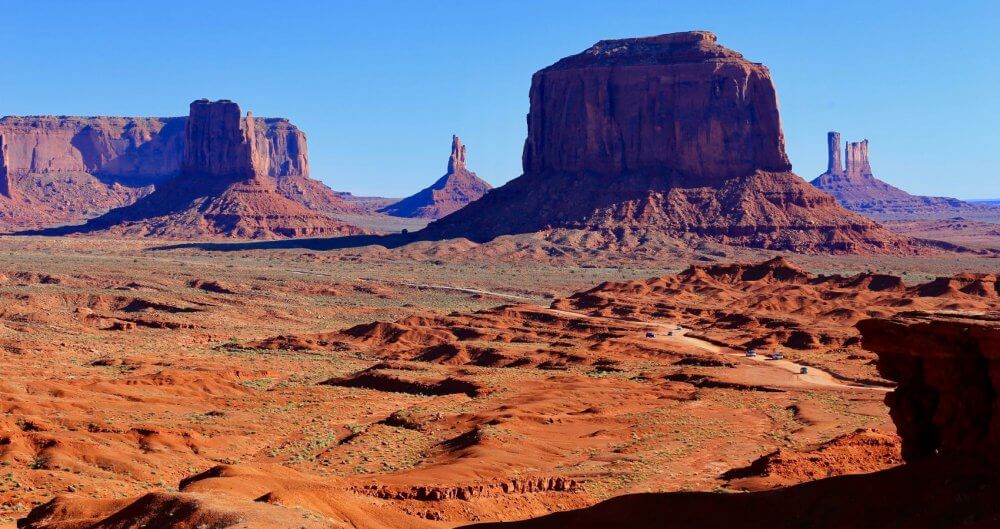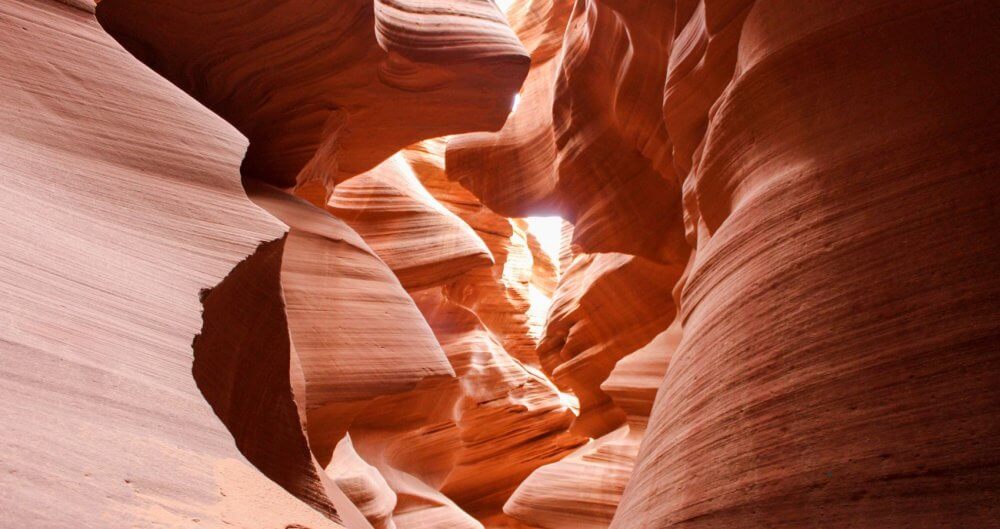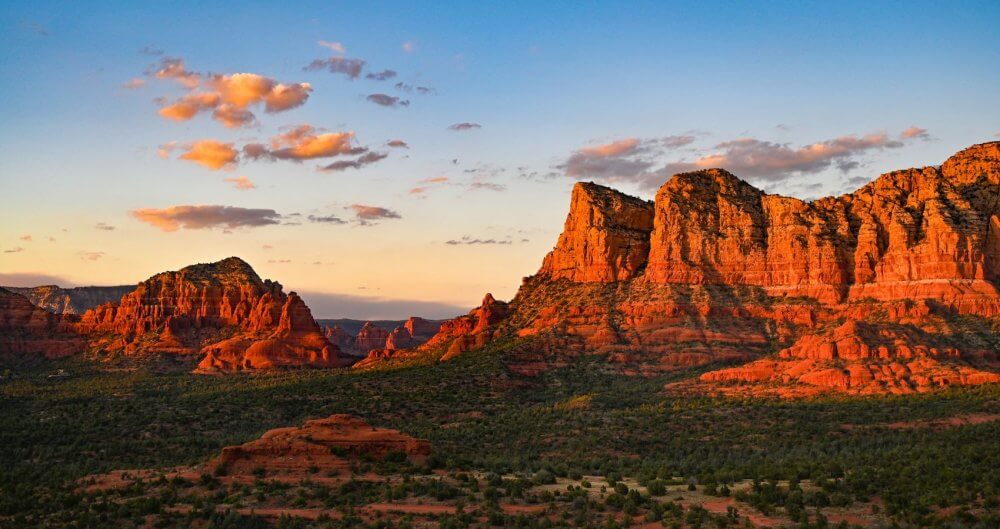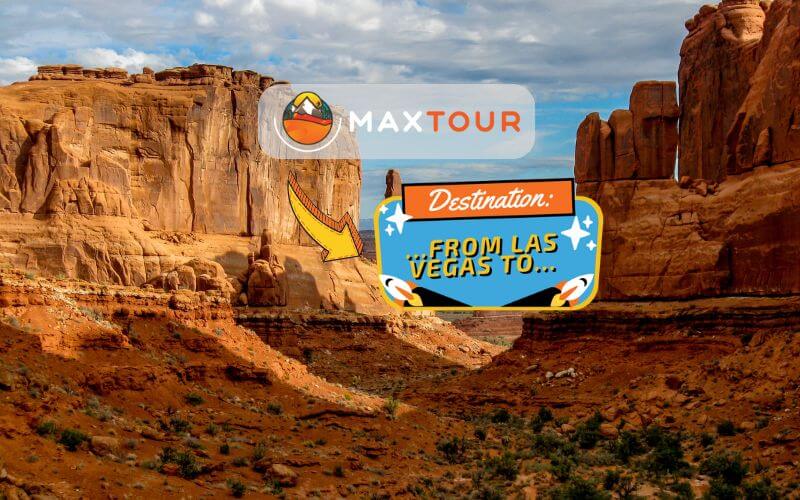When you think of the American West in cinema, certain landscapes immediately come to mind. These Iconic Southwest Locations in Movies have shaped how the world views the frontier, and they continue to attract both filmmakers and curious travelers.
Why? Because these places look exactly like the movies. Whether you’re watching a cowboy ride into the sunset or an alien land on red rock terrain, chances are it was filmed somewhere in the Southwest.

Monument Valley: The Definitive Western Landscape
No place screams “wild west” louder than Monument Valley. This majestic landscape on the Arizona-Utah border was the setting for classic westerns like Stagecoach (1939) and The Searchers (1956), both directed by John Ford.
Its tall sandstone buttes and sweeping desert views give films an instant sense of rugged adventure and timeless drama. Even today, Monument Valley shows up in popular movies, music videos, and car commercials.
- Over 100 films have used Monument Valley as a backdrop
- Monument Valley is featured on the Utah license plate, even though most of it is in Arizona
- The “Forrest Gump Point” is a real spot where fans recreate the iconic running scene
Many travelers experience this legendary spot on a National park tour from Las Vegas, which brings you to Monument Valley along with other must-see Southwest icons.

Antelope Canyon: Nature’s Abstract Art Gallery
If you’ve seen a movie with flowing walls of orange rock lit up by narrow beams of sunlight, it was probably filmed in Antelope Canyon. This narrow slot canyon in Arizona has been featured in films like 127 Hours (2010) and countless sci-fi scenes that need an alien-like landscape. Photographers love it, too—especially for its light beams and natural curves.
Walking through the canyon feels like stepping into a dream. The twisting sandstone formations and the way sunlight dances on the walls make it feel like nature designed a movie set just for you. What to put on your Southwest bucket list should absolutely include this magical place.
- Peter Lik’s photo “Phantom,” taken in Antelope Canyon, reportedly sold for $6.5 million
- The canyon is divided into Upper and Lower sections, both offering different visual experiences
- Light beams are most visible between late March and early October

Valley of Fire: Mars on Earth
Just a short drive from Las Vegas, Valley of Fire has doubled as alien planets in Total Recall (1990), Star Trek Generations (1994), and Transformers (2007). Its bright red rocks and strange shapes make it perfect for science fiction settings. It’s also very accessible, which is a big plus for film crews and tourists alike.
When you take a National park tour from Las Vegas, this is often one of the stops. Visitors can walk among the same rock formations used in famous scenes and snap their own Hollywood-style photos. The scenery looks completely surreal, like you’re standing on another planet.
Sedona: Mystical Red Rock Country
Sedona has long been a favorite of filmmakers for its bold, red cliffs and mysterious atmosphere. It’s shown up in everything from Johnny Guitar (1954) to 3:10 to Yuma (2007), and even Easy Rider (1969). The stunning scenery makes every shot feel more intense, more vibrant, and more alive.
Beyond movies, Sedona has become popular for spiritual getaways and adventure films alike. Its combination of color, rock formations, and desert skies creates visual magic. If you’re planning a trip, remember that the best months to travel the Southwest are April-May and September-October. That’s when the temperatures are pleasant and the lighting is just right for photos—or film.
- Sedona’s Chapel of the Holy Cross has appeared in multiple productions
- Many scenes shot in Sedona are often mistaken for Monument Valley due to similar colors
- The area is also known for its energy vortexes, adding to its mystical allure

Grand Canyon: America’s Most Recognized Natural Wonder
The Grand Canyon has made many appearances in film, including National Lampoon’s Vacation (1983), Into the Wild (2007), and the visually stunning finale scene of Thelma & Louise (though that was actually filmed nearby in Utah). While filming here can be tricky due to the canyon’s size, its visual impact is undeniable.
Most travelers get to see the cinematic side of the canyon on a 3 day Grand Canyon tour that also includes stops at Monument Valley and other filming favorites. It’s a chance to retrace movie scenes and take in the jaw-dropping beauty that’s been shown on screens big and small.
Zion National Park: Vertical Adventure Playground
Zion’s towering cliffs and narrow canyons have appeared in Butch Cassidy and the Sundance Kid (1969) and other films needing dramatic scenery. With so many different landscapes packed into one park—lush valleys, slickrock ridges, and deep canyons—it’s easy to see why filmmakers and tourists alike flock here.
The variety of terrain makes Zion feel like multiple movie sets in one location. Whether you’re watching a western gunfight or an epic climb in an adventure film, Zion fits the role perfectly.
- Zion’s “Angels Landing” hike is one of the most dangerous and scenic trails in the U.S.
- Scenes filmed here often show the Narrows, a slot canyon that hikers walk through in water
- The park has one of the oldest visitor centers in the National Park Service, opened in 1929
Bottom Line
These Iconic Southwest Locations in Movies continue to dazzle both audiences and adventurers. They’re more than just beautiful places—they’re cinematic legends. Whether you’re hiking through Antelope Canyon, standing at the edge of the Grand Canyon, or gazing up at Monument Valley’s buttes, you’re not just sightseeing.
You’re stepping into a scene from film history. So grab your camera, choose your route, and experience the American Southwest just like the movies do.

